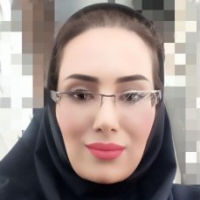Comparing the Geometric Motifs of the Tile Dadoes of the Timurid Period of Iran with the Dadoes in the illustrated Manuscripts of the Period*
It is always seen in different historical eras, the influence and impression between the different arts of that era. The Timurid period, like other historical periods, is not an exception to this rule, and there are many common points between the tiling decorations of this period, with simultaneous arts, especially with illustrated manuscripts. By review the paintings of the mentioned period, it is possible to see some commonalities between their geometric motifs and the tile Dadoes of simultaneous buildings. In this regard, the main question of this article is; What similarities can be found between the geometric motifs of the Dadoes of building tiles of the Timurid period of Iran and the Dadoes in the illustrated manuscripts at simultaneous in terms of geometry (knot), glaze coloring and decorations used on the tiles? The current research is based on the method of descriptive-analytical research. Therefore, the method of collecting information and data is documented and based on objective observations, includes visiting buildings, taking pictures of tiled dadoes and line drawing of samples with different software such as Corel Draw, Photoshop, etc. In this regard, with the question raised; The comparative study of the geometric motifs of the tile plinths of the Timurid era buildings in Iran, with some of the illustrated manuscripts, in terms of the type of knots, the color of the glaze and the decorations on them, is the main goal of the article. The results obtained from the study are: shared aspects from the point of view of the type of nodes; It shows that most of the knots used in the buildings of this period, especially the "regular hexagonal" knot, are comparable to the knots of the plinths of the buildings in the illustrated manuscripts of the same period. In addition to knots, this commonality can also be seen in the field of glazing colors. For example, the color of turquoise glaze used in the "regular hexagon" knot, which is the dominant color of this type of knot in the dadoes of buildings, is also used as the dominant color in the dadoes of manuscripts. In addition to the turquoise color of the jade green (dark green) glaze, which is used less than the turquoise color in the dadoes of the buildings of this period, this feature can be seen even in the illustrations of the illustrated manuscripts. The painters of the illustrated manuscripts, in the field of plant motifs as well as the gilded decorations on them, have not completely followed the patterns of the tiles of the buildings, but have created creativity and innovations in them while preserving the generality and nature of the motifs; Therefore, the motifs of tiles in the pictures have appeared mostly in a schematic and abstract form. It can also be acknowledged that perhaps the activity of painters in the field of designing decorative motifs has provided the reason for this similarity, as they worked both as motif designers in galleries and as master craftsmen in the decoration of buildings.
- حق عضویت دریافتی صرف حمایت از نشریات عضو و نگهداری، تکمیل و توسعه مگیران میشود.
- پرداخت حق اشتراک و دانلود مقالات اجازه بازنشر آن در سایر رسانههای چاپی و دیجیتال را به کاربر نمیدهد.




